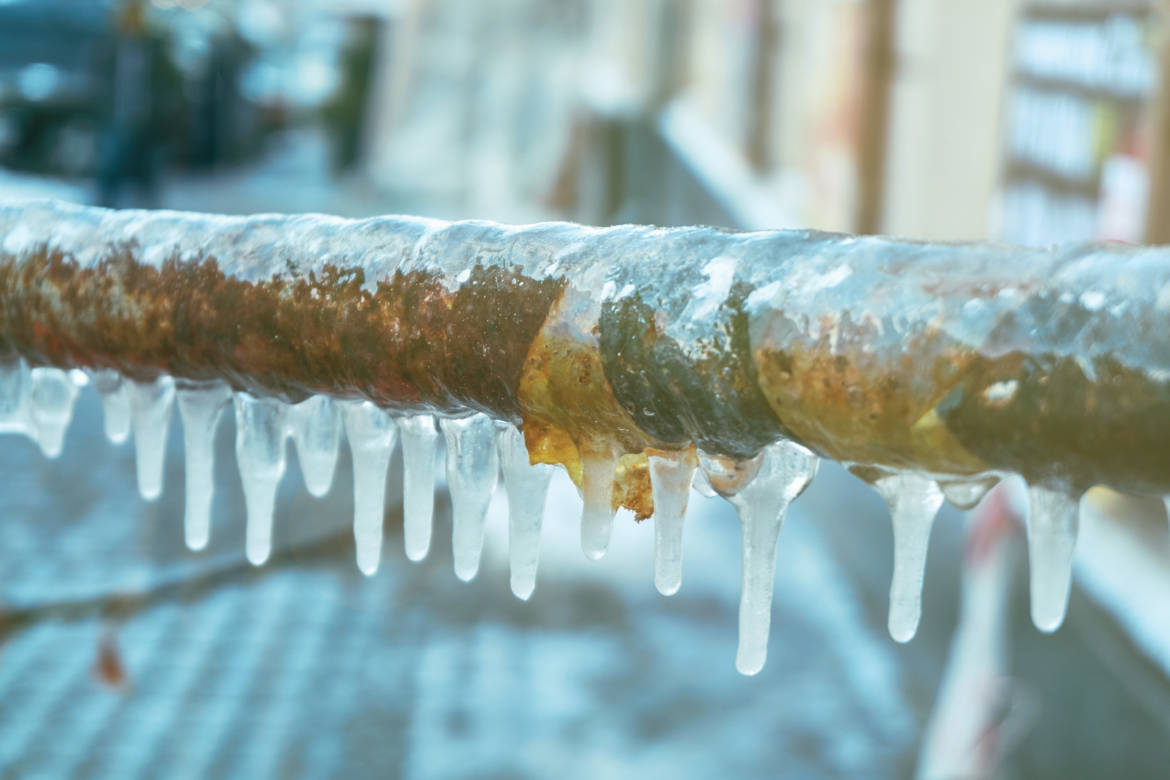Preventing Frozen Pipes in Winter: Expert Tips
Preventing Frozen Pipes in Winter: Expert Tips
Blog Article
We've encountered this great article about Preventing and dealing with frozen pipes directly below on the web and believe it made good sense to talk about it with you in this article.
:strip_icc()/snow-outdoor-faucet-pipes-4af65d1e5e904fb1aa7bf74071fe5d89.jpg)
Cold weather can ruin your pipes, specifically by freezing pipelines. Right here's exactly how to stop it from occurring and what to do if it does.
Introduction
As temperatures decline, the threat of frozen pipelines boosts, potentially bring about expensive repairs and water damages. Understanding just how to avoid icy pipelines is important for home owners in chilly climates.
Avoidance Tips
Shielding susceptible pipelines
Cover pipes in insulation sleeves or make use of warmth tape to protect them from freezing temperatures. Concentrate on pipelines in unheated or exterior areas of the home.
Heating strategies
Maintain indoor rooms appropriately warmed, particularly areas with pipes. Open up cupboard doors to enable warm air to circulate around pipes under sinks.
Exactly how to determine frozen pipelines
Seek lowered water circulation from taps, uncommon smells or sounds from pipelines, and noticeable frost on exposed pipelines.
Long-Term Solutions
Architectural modifications
Consider rerouting pipelines away from outside walls or unheated locations. Add added insulation to attics, cellars, and crawl spaces.
Upgrading insulation
Buy high-grade insulation for pipes, attic rooms, and wall surfaces. Proper insulation helps preserve constant temperature levels and reduces the threat of icy pipes.
Securing Exterior Plumbing
Garden hoses and outdoor faucets
Detach and drain yard pipes before wintertime. Set up frost-proof faucets or cover outdoor faucets with insulated caps.
Understanding Frozen Pipelines
What causes pipes to ice up?
Pipes freeze when exposed to temperature levels listed below 32 ° F (0 ° C) for extended durations. As water inside the pipelines freezes, it expands, putting pressure on the pipe wall surfaces and potentially causing them to break.
Dangers and damages
Icy pipes can lead to supply of water disruptions, residential or commercial property damages, and expensive repairs. Burst pipelines can flood homes and trigger extensive structural damages.
Signs of Frozen Pipeline
Recognizing frozen pipelines early can prevent them from bursting.
What to Do If Your Pipes Freeze
Immediate activities to take
If you suspect frozen pipes, keep taps open to ease stress as the ice thaws. Utilize a hairdryer or towels taken in warm water to thaw pipelines gradually.
Verdict
Avoiding frozen pipes requires positive procedures and quick reactions. By understanding the reasons, indicators, and safety nets, property owners can safeguard their plumbing throughout cold weather.
6 Proven Ways to Prevent Frozen Pipes and Protect Your Home
Disconnect and Drain Garden Hoses
Before winter arrives, start by disconnecting your garden hoses and draining any remaining water. Close the shut-off valves that supply outdoor hose bibs and leave the outdoor faucet open to allow any residual water to drain. For extra protection, consider using faucet covers throughout the colder months. It’s also important to drain water from any sprinkler supply lines following the manufacturer’s directions.
Insulate Exposed Pipes
Insulating your pipes is an effective way to prevent freezing. Pipe insulation is readily available at home improvement stores and is relatively inexpensive. Pay close attention to pipes in unheated areas such as the attic, basement, crawl spaces, or garage. Apply foam insulation generously to create a buffer against the cold. You can also wrap your pipes in heat tape or thermostat-controlled heat cables for added warmth.
Seal Air Leaks
Inspect your home for any cracks or openings that could let in cold air. Seal any holes around the piping in interior or exterior walls, as well as the sill plates where your home rests on its foundation. Additionally, make sure to keep your garage door closed unless you’re entering or exiting. Leaving it open creates a significant air leak that can lead to frozen pipes.
Allow Warm Air Circulation
During cold snaps, it’s essential to allow warm air to circulate evenly throughout your home. Leave interior doors ajar to promote better airflow. Open kitchen and bathroom cabinets to help distribute heat consistently around the rooms. If you have small children or pets, be sure to remove any household chemicals or potentially harmful cleaners from open cabinets for safety.
Let Faucets Drip
A small trickle of water can make a big difference in preventing ice formation inside your pipes. When temperatures drop significantly, start a drip of water from all faucets served by exposed pipes. This continuous flow helps prevent the water from freezing. Additionally, running a few faucets slightly can relieve pressure inside the pipes, reducing the chances of a rupture if the water inside does freeze.
https://choateshvac.com/6-proven-ways-to-prevent-frozen-pipes-and-protect-your-home/

I hope you enjoyed our post on Preventing and dealing with frozen pipes. Thank you so much for finding the time to read our posting. I beg you take the opportunity to share this write-up if you appreciated it. We take joy in your readership.
Get Offer Report this page